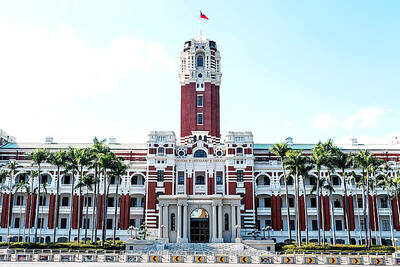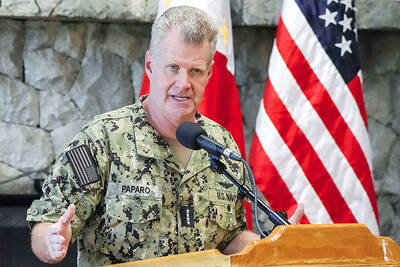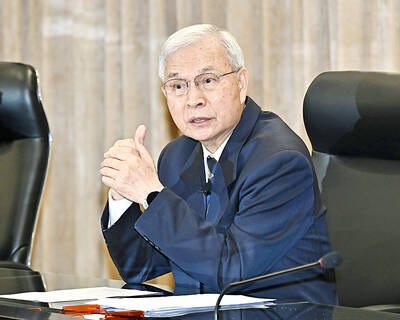The US and the EU filed separate unfair-trade cases against China on Tuesday, accusing it of favoring domestic industry by limiting exports of materials needed to produce steel, aluminum and other products.
Beijing defended its curbs as an effort to protect the environment and said they comply with China’s WTO commitments.
Analysts expect the fight over China’s export restrictions will be just one of many trade cases US President Barack Obama’s administration files against China. Obama made campaign pledges to take a tougher approach with US trading partners in the face of soaring job losses and the longest US recession since World War II.
The materials at issue include coke, bauxite, magnesium and silicon metal, the US complaint says.
The US and EU complaints filed with the Geneva-based WTO say China’s export restrictions give its companies an unfair edge over their foreign rivals by giving them access to cheaper materials, despite WTO rules against export curbs.
US Trade Representative Ron Kirk said the Obama administration decided to pursue a WTO case after two years of talks between the Chinese and the Bush administration had failed to reach a resolution. He said China’s actions were endangering US jobs.
“The United States believes that China is unfairly restricting exports of raw materials,” Kirk said. “These actions are hurting American steel, aluminum and chemical manufacturers, among other industries, that desperately need these material to make their products.”
Beijing said it hoped to resolve the dispute through dialogue in the WTO.
“The goal of the Chinese side’s policy on the relevant exports is to protect the environment and natural resources, and the Chinese side considers the relevant policy to be compliant with WTO regulations,” the Ministry of Commerce said in a written statement.
The ministry yesterday said that Beijing has filed its own complaint asking the WTO to investigate a US ban on imports of Chinese poultry.
The US and EU complaints trigger a 60-day consultation period.
If the dispute is not resolved, they can formally request a WTO hearing panel. At that point, the cases likely would be merged.
If the US and EU prevail at a WTO hearing — a process that can take up to a year — and China still refuses to lift the export restrictions, the two would be given a go-ahead to impose economic sanctions on China. Those sanctions would be equal to the harm inflicted on their companies by Beijing’s actions.
“The United States has a strong case,” said Dan Griswold, a trade economist at the Cato Institute, a Washington think tank. “And it certainly adds weight to the US case that the two largest trading entities in the WTO have joined together. That should get China’s attention.”
Officials from the US and EU sought to protect their domestic companies’ collective ability to compete on a global scale.
The American Iron and Steel Institute — whose members include Nucor Corp and United States Steel Corp — the United Steel Workers and other industry groups released a joint statement praising the administration’s decision to pursue a WTO case against China.
“When China joined the WTO in 2001, it committed to removing these restrictions,” the groups said.
They called the barriers on the export of raw materials and minerals “just another way in which China favors its domestic manufacturing industries at the expense of the rest of the world.”

The CIA has a message for Chinese government officials worried about their place in Chinese President Xi Jinping’s (習近平) government: Come work with us. The agency released two Mandarin-language videos on social media on Thursday inviting disgruntled officials to contact the CIA. The recruitment videos posted on YouTube and X racked up more than 5 million views combined in their first day. The outreach comes as CIA Director John Ratcliffe has vowed to boost the agency’s use of intelligence from human sources and its focus on China, which has recently targeted US officials with its own espionage operations. The videos are “aimed at

STEADFAST FRIEND: The bills encourage increased Taiwan-US engagement and address China’s distortion of UN Resolution 2758 to isolate Taiwan internationally The Presidential Office yesterday thanked the US House of Representatives for unanimously passing two Taiwan-related bills highlighting its solid support for Taiwan’s democracy and global participation, and for deepening bilateral relations. One of the bills, the Taiwan Assurance Implementation Act, requires the US Department of State to periodically review its guidelines for engagement with Taiwan, and report to the US Congress on the guidelines and plans to lift self-imposed limitations on US-Taiwan engagement. The other bill is the Taiwan International Solidarity Act, which clarifies that UN Resolution 2758 does not address the issue of the representation of Taiwan or its people in

US Indo-Pacific Commander Admiral Samuel Paparo on Friday expressed concern over the rate at which China is diversifying its military exercises, the Financial Times (FT) reported on Saturday. “The rates of change on the depth and breadth of their exercises is the one non-linear effect that I’ve seen in the last year that wakes me up at night or keeps me up at night,” Paparo was quoted by FT as saying while attending the annual Sedona Forum at the McCain Institute in Arizona. Paparo also expressed concern over the speed with which China was expanding its military. While the US

SHIFT: Taiwan’s better-than-expected first-quarter GDP and signs of weakness in the US have driven global capital back to emerging markets, the central bank head said The central bank yesterday blamed market speculation for the steep rise in the local currency, and urged exporters and financial institutions to stay calm and stop panic sell-offs to avoid hurting their own profitability. The nation’s top monetary policymaker said that it would step in, if necessary, to maintain order and stability in the foreign exchange market. The remarks came as the NT dollar yesterday closed up NT$0.919 to NT$30.145 against the US dollar in Taipei trading, after rising as high as NT$29.59 in intraday trading. The local currency has surged 5.85 percent against the greenback over the past two sessions, central